

TO SERVICE
landmark on the Mississippi River has been missing for a year. When will USS Kidd come home?
BY JOY HOLDEN Staff writer
One of Baton Rouge’s Mississippi River landmarks has been missing for a year There is a blank space where the USS Kidd used to be, as she’s currently getting a facelift while being repaired in dry dock in Houma.
“Taking her away to dry dock for awhile has made Baton Rouge appreciate her more,” said USS Kidd ship superintendent Tim NesSmith, who has worked at the USS Kidd Veterans Memorial & Museum since 1995.
Having served from 1943 through 1946 in the Pacific, from 1951 through 1964 during the Cold War and then cradled in the Mississippi since 1982, the World War II Fletcher-class destroyer was in dire need of repairs and restoration
For three days, across 289 miles, the ship traveled down the Mississippi River, across the Gulf and up the Houma Navigation Canal to Thoma-Sea shipyard. She arrived May 2, 2024, and was raised into dry dock August 13.
Two industry professionals, a naval engineer and a naval archi-

repairs will be finished in July or November of 2025, depending on fundraising efforts. Neither of those dates are traditionally amenable in terms of river levels for allowing the ship back into the cradle, so it’ll likely be sometime in spring 2026 when she returns.
According to an economic impact survey the Kidd brings in about $3.1 million to Baton Rouge’s economy After the restoration and return, the total income of the Kidd is projected to increase to $5 million, which includes putting money into the economy through hotels, restaurants and other museum visits. Museums as a whole return more than $5 in tax revenue for every $1 they receive in funding.
tect, are overseeing the $11 million project, which includes fixing the hull, repainting the ship with a new camouflage, upgrading the cradle, modifying the rudder, restoring the steward’s quarters and replacing the fantail deck. In addition to period accuracy, the ship is being repaired to last another 60 years for the next generations to learn from and enjoy
“Everything we are doing is for longevity,” NesSmith said.
NesSmith estimates that the
Strengthening the hull
The main structural component that keeps a ship afloat, the hull protects a ship from the water and weather Over time, the hull metal on the USS Kidd degraded due to salt water, so it is pockmarked by divots. The Thoma-Sea construction crew tested the entire hull, from water line all the way down, by ultrasound to determine the
BY SERENA PUANG

BY GRETCHEN
Quality Dubai chocolate can still be hard to find.
That’s why when The New York Times published a recipe for the candy bar a few months ago I decided to try my hand at it — even though candy-making is not exactly in my wheelhouse I was surprised — no, make that delighted to discover that it’s actually pretty easy to make a pretty good Dubai chocolate bar at home The hardest step was shelling all the pistachios the recipe requires (almost 3 cups). That, and waiting 35-40 minutes until the bars have been properly chilled and can be unmolded for sampling.
To make this recipe, you’ll need at least one 6-inch-by3-inch-by-1-inch silicone chocolate mold. It’s better to have four, if you don’t want to work in batches. You can find any number of reusable Dubai chocolate bar molds on Amazon; I used one made by UWillion.
A silicone pastry brush also comes in handy to coat the molds with melted chocolate, but you can also use the back of a spoon.
Finally you’ll need to set aside a fairly large chunk of time, since the chocolate has to set both before and after it’s been filled with the pistachio cream/kataifi mixture.
The only downside to the recipe is its expense: Even using Ghirardelli milk chocolate-flavored melting wafers, which are easier to melt and less expensive than chopped milk chocolate, the ingredient list quickly added up to more than $25
To help prevent cracking when cutting the bar into squares, allow the chocolate to cool to room temperature before refrigerating. Also, use a very sharp knife that’s been warmed in hot water (and dried) to cut it.
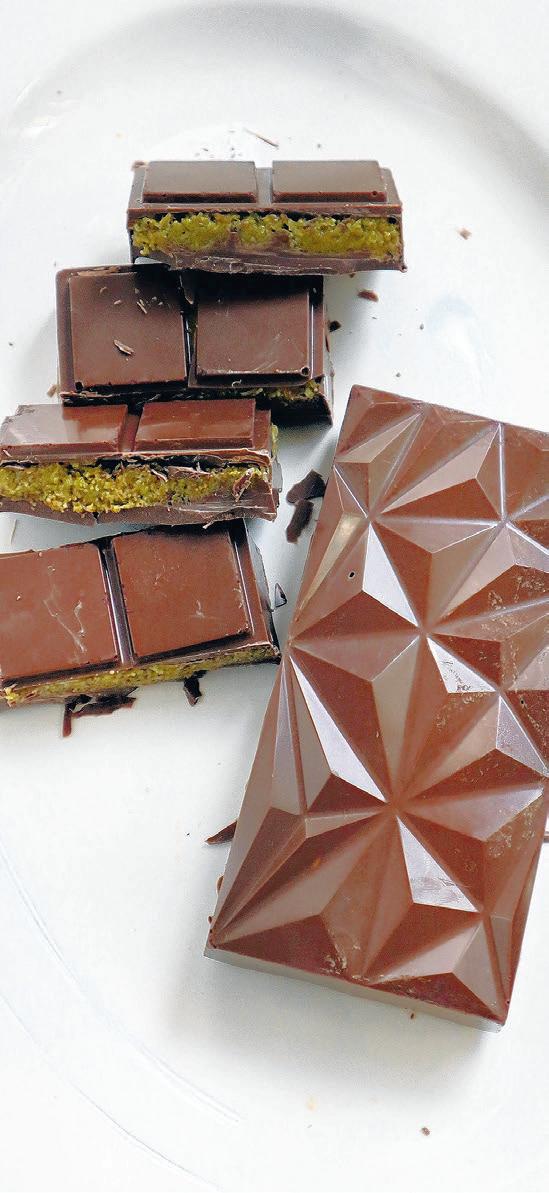
PHOTOS BY BRAD WEIMER
The USS Kidd rests in dry dock at the Thoma-Sea shipyard in Houma. The Fletcher-class destroyer arrived on May 2, 2024, and is tentatively set to return to Baton Rouge in the spring of 2026.
This stir-fry is all about the apricot sauce
BY ADAM DOLGE | EatingWell
Apricot jam adds just the right amount of sweetness to balance the spicy, salty and umami flavors in this sauce that lightly coats tender pieces of pork and crisp green beans. If gluten is not a concern, soy sauce may be used instead of tamari.
Pork & Green Bean Stir-Fry
Homemade Dubai Chocolate
Makes 4 chocolate bars. Recipe is from nyt.com Kataifi, a shredded variety of phyllo, is available in the refrigerated or freezer section of Middle Eastern grocery stores. If frozen, thaw it overnight in the refrigerator before use
2¾
in the refrigerator if frozen (about half of a 1-pound package)
18 ounces chopped milk or semisweet chocolate, or
3 heaping cups chocolate chips
1. Make the pistachio cream: In a food processor, combine pistachios, sugar, olive oil, vanilla and salt. Process until it becomes a creamy nut butter, stopping to scrape down the sides of the food processor with a spatula to ensure a uniform mixture. It will progress from chopped nuts to a thick nut paste, then finally transform into a silky, slightly thin nut butter This takes about 6 minutes.
2. Add tahini and process until fully incorporated, about 30 seconds more. Keep the mixture at room temperature while you make the rest of the filling.
Continued from page 1G
thickness and health of the hull.
The welders have used three methods to repair the Kidd’s hull, and it is ready for paint.
New paint and camouflage
One of the last tasks to be completed while in dry dock is painting the ship’s hull a bright red. In the past, anti-fouling paint was used on most ships to deter barnacle life, but there aren’t any barnacles in the freshwater of the Mississippi. The anti-fouling paint turned a tannish brown color from silt, chemicals and freshwater, so the hull on the Kidd will get a new coat of paint that is made to withstand freshwater and sunshine.
“The Kidd is the only museum ship in the world that floats half the year and is completely out of the water and sitting on her keel blocks the other half of the year,” said Parks Stephenson, the executive director of the museum.
The rest of the ship has a new paint job as well. The Kidd is now painted in a grey and black color scheme known as Measure 32/10 D, or dazzle camouflage, which was used from December 1943 to January 1945.
NesSmith says the camouflage changed during WWII, and the sharp dazzle camouflage was used to confuse enemy gunners and torpedo operators about the ship’s speed, direction and type.
“Our new director, Parks Stephenson, really wanted to show something new to Baton Rouge, and so he decided to go with her 1944 camouflage, even though she is set up in 1945 configuration,” said NesSmith. “So we all hashed it out and everything, and we agreed to an education cycle.”
The USS Kidd museum will educate on a five-year rotation cycle. Every five years, the ship will be painted a different camouflage, and the team will educate on the benefits of that pattern In five years, the ship will return to a 1943 camouflage, which is all dark blue. By 2035, she should be back
GOLF
Continued from page 1G
3. Toast the kataifi: In a large, high-sided skillet or large pot over medium heat, melt the butter When it starts to bubble, add chopped kataifi and cook, stirring frequently and breaking up any unbrowned clumps, until it is evenly crisp and golden brown, about 15 minutes.
4. Transfer to a large plate and let cool completely, about 10 minutes Once cooled, combine the toasted kataifi with the pistachio cream in a large bowl, mixing with a spatula until fully combined Keep it at room temperature while you work with the chocolate.
5. Melt the chocolate: Set a medium heatproof bowl over a pot of simmering water Add half the chocolate to the bowl and heat, stirring occasionally, until melted. (Or melt chocolate in a microwave-safe bowl in 15-second increments and stirring well between intervals, until smooth.)
6. Once the chocolate in the bowl is fully melted, transfer the bowl to a work surface. (Keep the pot of hot water covered in case it’s needed later.) Working with a small handful at a time, begin adding the unmelted chocolate, stirring constantly
in measure 22 again, the cool grey and light blue of 1945. Painting the Kidd is a job that can be done in the cradle, so she will not have to be moved every five years.
In addition, the pirate will be back on the smokestack of the Kidd, but it will be a cutout that is bolted to the stack.
Cradle upgrade
The cradle that held the ship for 42 years in the Mississippi River was in bad shape NesSmith says that the neoprene on the mooring collars used in the 1980s deteriorated which created a jarring effect every time the ship sits back down into the cradle, which happens often as the river moves the ship up and down. Even a few inches can make a difference with a ship this size.
Two layers of new, modern material pads will replace the neoprene pads, and new stainless steel bolts will attach the pads instead of the rusted ones
“The next generation won’t have to worry about that,” NesSmith said, “and this new material will maintain its elasticity for a lot longer than the neoprene did. So, we’ll go a longer period of time before we have to maintenance the cradle.”
A lucky rudder accident
The Kidd’s rudder was critical for maneuverability during World War II, but its a good thing it’s no longer needed. When leaving the cradle, the rudder got stuck due to low water levels, and workers had to cut four feet off the rudder
After looking at blueprints from other Fletcher destroyers, NesSmith and Stephenson noticed that the rudder was a Cold War modification in order to increase the ship’s turning radius.
NesSmith said that, in the 1950s, the Navy added about a two-foot section all the way up on the back of the rudder to lengthen it, and then they added about a two foot section on the bottom to deepen the rudder
Cutting four feet off the rudder, by lucky accident, was more in line with 1945 measurements Instead of reattaching the rudder, the mu-
1. Whisk jam, tamari, sesame oil and chile-garlic sauce in a small bowl. Set aside.
2. Toss pork with cornstarch in a medium bowl until no cornstarch remains at the bottom of the bowl.
3. Heat grapeseed (or avocado) oil in a large flat-bottom wok or cast-iron skillet over medium-high heat until it shimmers. Add the pork and cook, stirring occasionally, until browned and crisp, 6 to 8 minutes. Stir in green beans and continue to cook, stirring often, until the beans are tendercrisp, 3 to 6 minutes. Add the jam mixture and cook, stirring often, until well coated, 30 seconds to 1 minute. 4. Remove from heat and add scallions and sesame seeds. Toss to combine Sprinkle with more scallions, if desired. RECIPE NUTRITION PER SERVING: 387 calories, 19
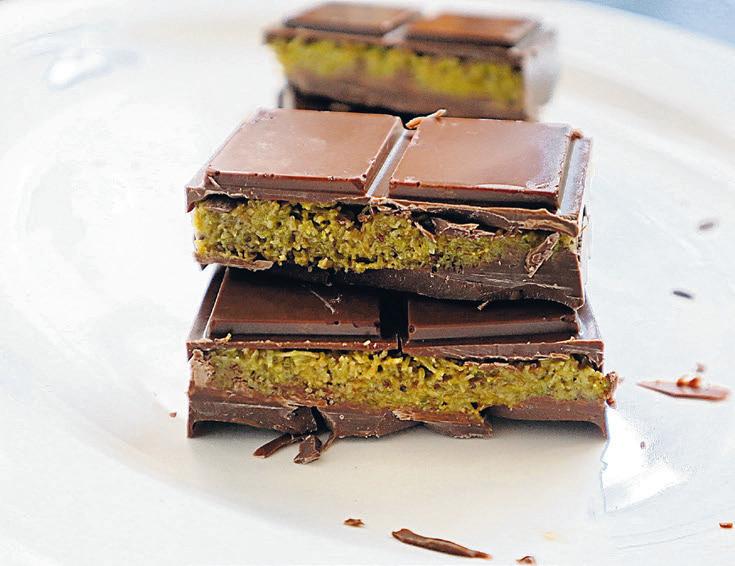
until each addition is fully melted before adding more.
7. Assemble the chocolate bars: Place four 6-inch-by-3-inch-by-1-inch silicone chocolate bar molds on a sheet pan so it’s easy to transfer them in and out of the fridge.
8. Working with one mold at a time, place ¼ cup melted chocolate in a mold; using a pastry brush or the back of a small spoon, paint the inside of each mold with the chocolate, completely covering the bottom and sides. Transfer the molds to the fridge until the chocolate is hard, at least 30 minutes.
9. Once the chocolate is fully set, remove the molds from the fridge. Divide the filling evenly among the molds (about ¾ cup loosely packed filling per mold).
10. Smooth the filling with a spatula to fill the molds almost to the top in an even layer, and transfer to the fridge until the kataifi mixture has firmed up slightly about 10 minutes.
11. Give the remaining melted chocolate a stir (if it’s become too thick to stir, set the bowl over the pot of water over low heat, stirring until it’s easily spreadable, or microwave in 5-second intervals, stirring in between intervals).
12. Pour the remaining chocolate on top of the bars, dividing evenly Using an offset spatula or the flat side of a knife, spread the chocolate out to cover the entire surface of the filling in a smooth, even layer Scrape any excess chocolate off the tops of the molds with the spatula or knife. This will ensure clean edges on the bars when you unmold them.
13. Return the chocolate bars to the fridge and chill until hard, 30-45 minutes. To unmold, gently pull the silicone away from each bar and pop them out. Enjoy right away, or wrap the bars individually to keep in the fridge for up to 3 weeks. Enjoy them chilled or let them come to room temperature before snapping into one
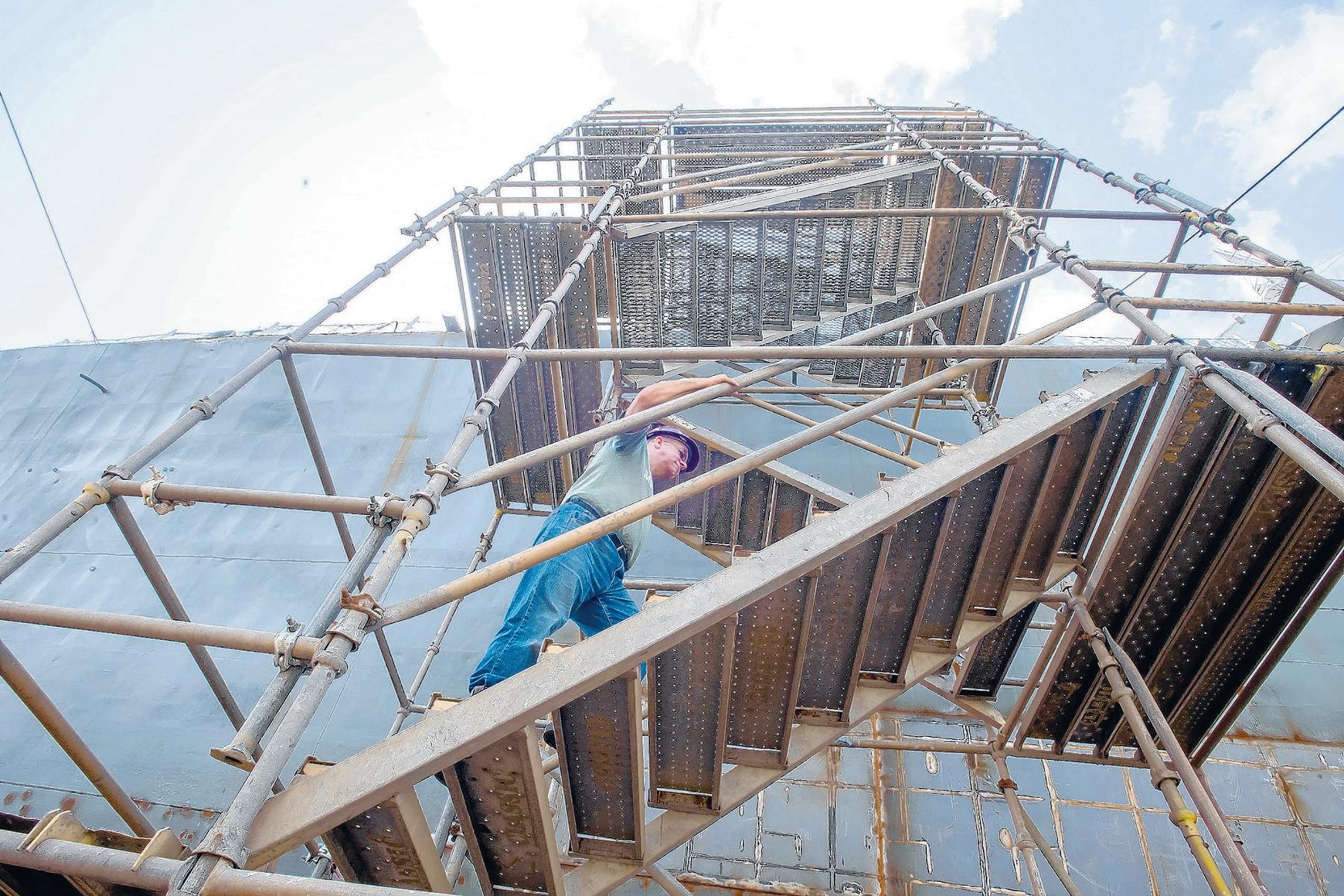
seum team decided to adapt the rudder to its August 1945 regulations.
Stewards’ quarters restoration
As a part of resetting the ship to its 1945 configuration, the museum team had the dumbwaiter, a small freight elevator to move food to the officers’ quarters, and fire control equipment removed. During World War II, that section of the ship belonged to the Black American sailors who were stewards to the officers The ship was segregated until the Korean War, and this small space was were they slept — made to accommodate about 12 bunks and three lockers.
After removing the dumbwaiter and fire control equipment, the stewards’ berth is ready to have bunks back in place. In his research on the Kidd’s stewards, NesSmith found records of 21 to 22 Black American stewards from 19431946. Although segregated within
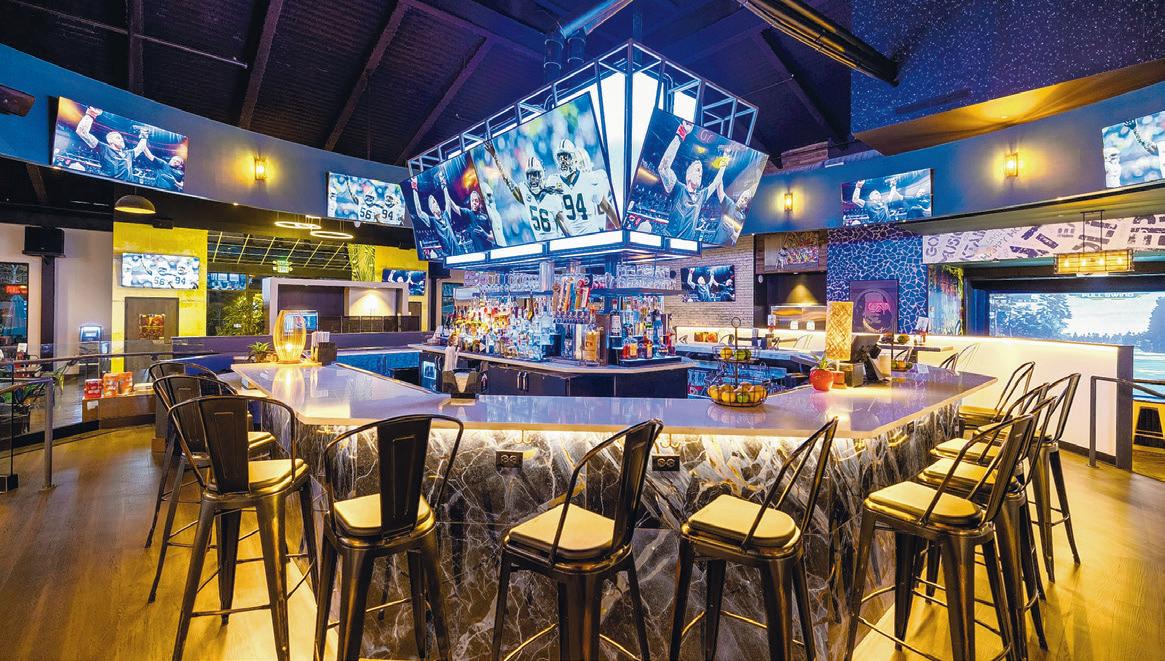
the ship, when sailors were called to battle stations, they fought side by side.
The USS Kidd Veterans Memorial & Museum is working with the Baton Rouge African American Museum to erect a plaque about the history of this section of the ship.
Another interior restoration is happening on the second deck’s starboard mess passageway, where the construction crew removed sonar amplifiers from the Cold War era.
They will be replaced with a 12man mess table and either two bunks or hammocks. The museum works closely with other destroyer “sister ships” when it comes to adding or removing period-accurate equipment.
Fantail deck replacement
Throughout the years, the museum crew could not figure out why the deck on the fantail kept rusting.
A Pennsylvania volunteer named
Ed Zajkowski discovered the reason on old blueprints — galvanized steel.
“It’s unknown why galvanized was used in 1943 in the original construction,” NesSmith said. “We’re checking with our sister Fletcherclass destroyers that still survive to see if they were built with it also, or if it was perhaps a one-time substitution in the shipyard during wartime. Remember, ‘Get them out. Get them fighting. Win the war!’ was the mindset back then. None of these ships were ever intended to survive 82 years.”
While in dry dock, the crew has replaced the galvanized steel with regular 3/8 inch steel, so the Kidd will continue to survive.
“Every museum ship is one disaster away from going away, which is why we have to be very diligent,” said NesSmith.
Email Joy Holden at joy.holden@ theadvocate.com.
“This
Puang
PITTSBURGH POST-GAZETTE/ TNS PHOTO BY GRETCHEN McKAY
Homemade Dubai Chocolate
PHOTO BY BRAD WEIMER
Tim NesSmith, ship superintendent, climbs the 35-foot scaffolding stairs to get to the deck of the USS Kidd, which is getting repairs in the dry dock at the Thoma-Sea shipyard in Houma.
PROVIDED
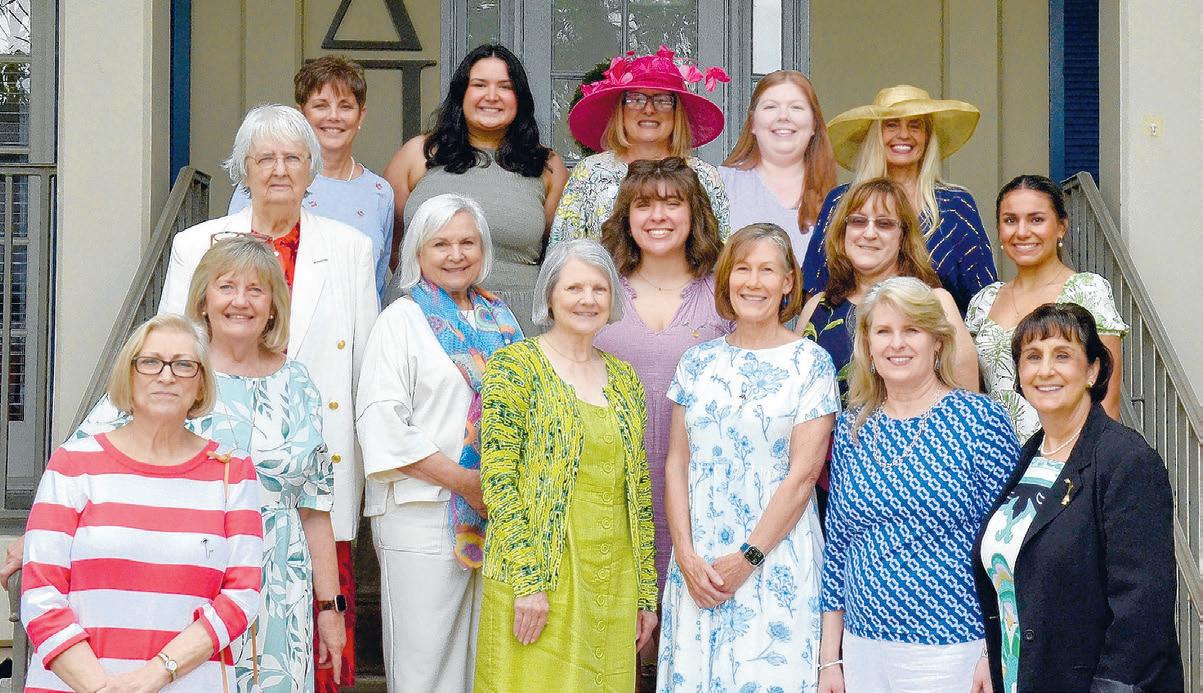
Alpha Delta Pi
Alpha Delta Pi collegians and alumnae gathered at the Alpha Delta Pi house on LSU’s campus on April 26 to celebrate the 174th anniversary of the founding of the sorority. Shown are, from left, first row, Mary Gay Landry, Jackie Kennedy, Nora Adams, Carolyn Booker, Fran Grega and Lee Ferriss; middle row, Mary Francis, Annette Zimmer, Ashleigh Jambon, Melinda Robert and Paris Koch; back row, Belinda Amato, Avery Ingham, Kelly Bauder, Elizabeth Craig and Karen Gaupp-Wozniak. Not pictured is Sirikhwan Pamornkul.

Garden Discovery Series
Allen Owen presented a Garden Discoveries series session titled ‘Louisiana Super Plant Winners’ at the Main Library at Goodwood on April 12. Shown are, from
and Dot Mounger

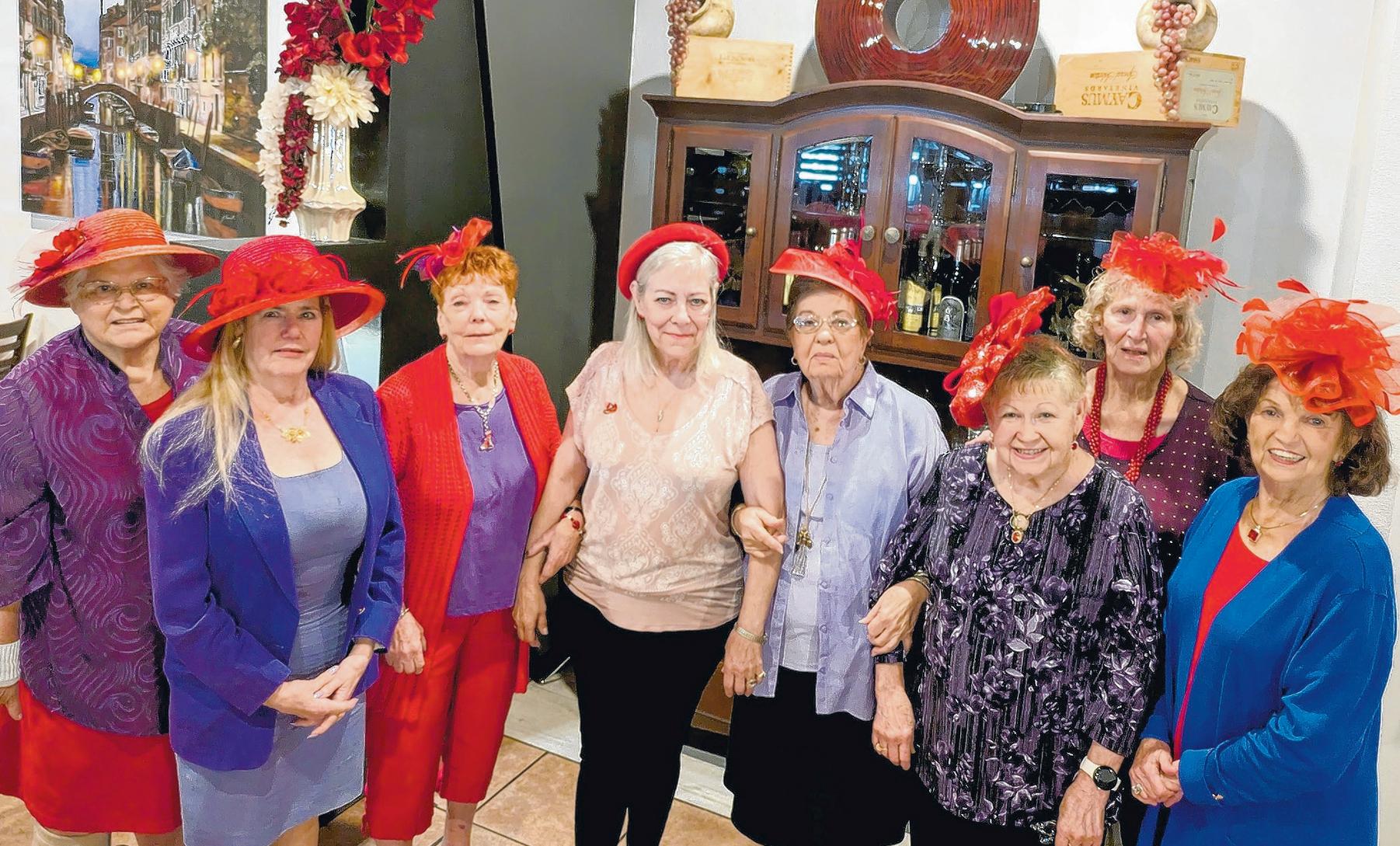







PROVIDED PHOTO
PROVIDED PHOTO
left, Julie Folse, Owen
PROVIDED PHOTO
Red Hatters
The GLAD Red Hat Club met April 15 for lunch at La Contea’s Italian Restaurant. Gathered are, from left, Stuart Greer, Debbie Harris, Linda Crane, Ruth Glatt, Linda Henning, Liz Walker, Gerri Cornett and Carol LaRouche.
PROVIDED PHOTO
Local DAR Chapters
Five local chapters of the Daughters of the American Revolution congratulated new American citizens on May 2 at the Raising Cane’s River Center Theatre. The John James Audubon, Canary Islands, Alexander Stirling, Baton Rouge and Heirome Gaines chapters provided refreshments for the new citizens and their guests. Gathered are, from left, first row, Christie Webre, Lynne Richard, Maribeth Andereck, Margaret Roubique, Kim Fossey, Pat Veazey, Candace Binder, and Lillian Dunlap; back row, Judge John Michael Guidry, Judge Michael Crawford, Judge Erin Wilder-Doomes, Alisa Janney, Judge Scott Johnson and Judge Brian Jackson. Not pictured is Brittney Kean.
OUR AUDIENCE ISOUR SUPER POWER

We use theincrediblepowerofour audience to executeadvertisingand marketingcampaigns with aclear mindset –results. If we don’t achieve results, we don’t keep ourclients.

You’relucky to have onegreat brand. Thankstoacommitment to Louisiana anda commitment to local, we have several.
Andgreat brands bringgreat readers
163MILLION TOT AL USERS
810,000 PR INT READERS
We’re committed to long-termsuccess when manyofour peersare retreating. Ittakes innovation andinitiativeacross all our platforms andall ourteams. We’reherefor apurpose. Forour readers. Forour clients.For Louisiana.
